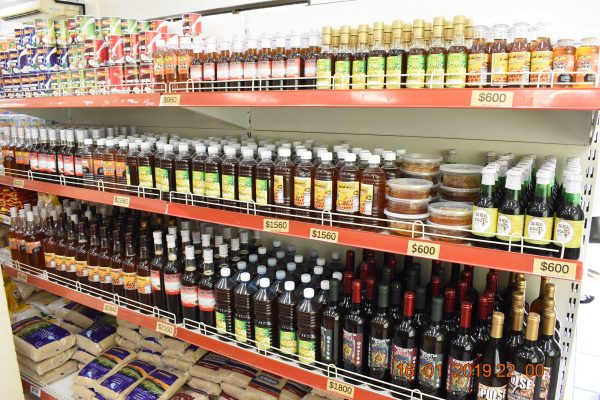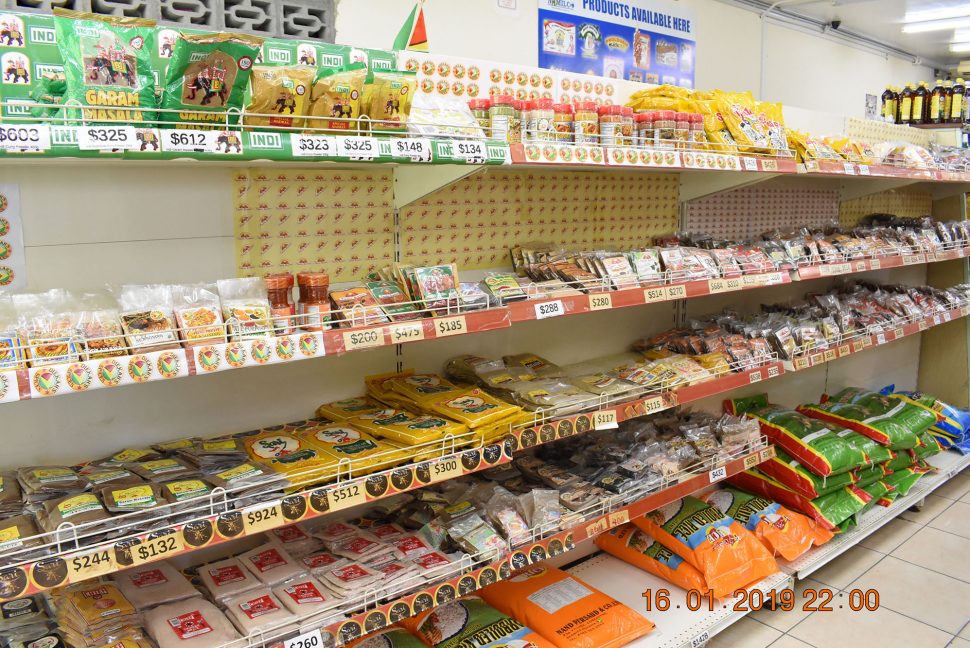If agro-processors are to identify and effectively exploit the right opportunities for investing in a processing venture it is necessary that they pursue what sometimes can be rigorous and painstaking research. Here in Guyana, as is the case elsewhere, the margin for error can be small and the cost of failure to spot a potential pitfall, high. It is necessary for investors in agro-processing ventures to ensure that they can cover their costs, that is, that they can sell their products at a profitable price.
Why are agro-processing ventures often unsuccessful? Processing developments often fail to take into account the fact that the product has to be sold. Processing initiatives are sometimes started for reasons that might have little if anything to do with sound business decision-making. It may be that the venture is found to be relatively easy to accomplish technically or because it may be some pursuit that may be ‘in fashion’. In other instances agro-processing initiatives may be undertaken for no other reason than the requisite raw materials are cheap and easily available. Very often, the fact that the finished product must pass the acid test of customer satisfaction and that ways of selling and distributing it have to be developed, often receives far less attention.

The result can be a well-intentioned initiative that ends up being a loss-maker. It is generally felt that conventional entrepreneurs are less likely to make such errors given the fact that invariably they are investing their own money in the project. On the other hand it is felt that groups such as cooperatives supported by state bodies, NGOs or donors are more likely to fail. The private sector, so the argument goes, usually begins by raising questions relating to whether or not money can be made from the venture and if so, how much. On the other hand, NGO’s for example, are more likely to begin by asking the question “what can we do to help people in this area?” Such a question may well not lead to an involved market investigation. In the absence of market research the risks may be manifold. There is the risk that consumers may not need or want the product, may not like it or the way it is packaged and presented. There is a risk that retailers may not want to sell the product. Finally, there is the possibility that the asking price may be too high for consumers to afford. For some or all of these reasons many well-intentioned agro-processing initiatives (including several here in Guyana) end up being spectacular loss-makers.
Research is also required to ensure that the agro-processing can be carried out efficiently and, hence, profitably. Are raw materials available when required and at an affordable price rather than simply being either seasonally abundant and cheap or non-existent? Are other ingredients and packaging materials easily available? Will problems be experienced with constructing and equipping the factory? Any one of these and many other potential problems is enough to result in the failure of an agro-processor.
Investors in agro-processing should have a solid foundation on the domestic market before thinking about exporting. More than that, agro-processors should monitor their markets as an ongoing activity. Market conditions can change overnight and processors need to be aware of such changes.
What is a market?
A ‘market’ is an actual or nominal place where forces of demand and supply operate, and where buyers and sellers interact (directly or through intermediaries) to trade goods, services, or contracts or instruments, for money or barter.
Markets include mechanisms or means for (1) determining price of the traded item, (2) communicating the price information, (3) facilitating deals and transactions, and (4) effecting distribution. The market for a particular item is made up of existing and potential customers who need it and have the ability and willingness to pay for it.
One of the most important aspects of demand is the quantity of a product that consumers want to buy. But when we talk about demand and the ‘market’, we consider many other factors, including product, price, place and promotion.
Product
The taste and other attributes of the product that consumers prefer; the quantities, packaging and sizes consumers buy; the appearance, including labels.
Price
Competitors’ wholesale and retail prices; competitors’ price response to a new product; price variations according to location and type of consumer; methods of setting prices.
Place
Where and how to sell the product; advantages of different types of distributors; how distributors can be supplied; distributors’ requirements in terms of quantity, delivery and price; the costs involved in the various distribution options.
Promotion
The advertising required; other promotional tools that are used, such as free samples; costs involved with various types of promotion.
What is market research?
Market research is the process of investigating a market in order to find out the sales prospects for a product and how to achieve success with it. Put another way, it is the set of activities necessary to obtain the information required about the market that we have listed above. At the simplest level such research may just involve talking to people in the same village to find out what they want to buy and what they can afford to buy. At the most complex level, large organisations may carry out person-to-person or telephone interviews with thousands of potential consumers. However, both activities have the same aim: to make sure that a product can be sold and that it can be sold profitably. Market research activities that will be considered in this guide include:
Consumer Questionnaires; Tasting tests: To see if people accept the product, or which tastes they prefer;
Interviews: With retailers and wholesalers.
Why do agro-processors need market research?
Processing facilities can be costly to establish. Individual entrepreneurs may put all of their savings into setting up a small factory. Banks may lend large sums of money to new ventures, or to existing ventures to enable them to expand their operations. Governments, donors or NGOs may similarly lend or give grants of large amounts.
Some of the reasons why processing ventures fail:
● Failure to identify the right processing opportunities;
● ·High fixed costs;
● High selling price or, alternatively, the low selling
● price of competitors;
● Product and packaging quality;
● ·Failure to identify potential problems.
Failure to identify the right opportunities for processing.
Processing activities are rarely started because of detailed market research that has identified particular opportunities. This could lead to a company failing to identify the most profitable products it could produce. For example, it may decide to process pineapple juice because pineapples are abundant, and fail to notice that orange juice processing could be much more profitable.
High fixed costs.
A factory needs to achieve a certain minimum throughput in order to make products at a price consumers can afford. Processing facilities have a number of fixed costs and overheads, such as the cost of the building and the cost of the processing equipment. The more products that are produced, the lower the fixed cost per unit. On the other hand, the variable costs, such as the cost of the raw materials, increase in proportion to how much is processed. The profitability of a factory depends on its ability to minimise the fixed costs per unit produced. When production is significantly less than the capacity of the factory then fixed costs per unit will rise to unacceptable levels and the factory will have to close down.
Two reasons why fixed costs per unit may be too high are:
Demand for the product is below what may have been projected; supply of raw material of the right quality and price may be less than the possible throughput of the factory.
Initial research of processing feasibility doesn’t just involve studying the market for the product, it also involves making sure that there will be enough raw material to keep the factory operating at close to capacity. Large factories, if they are efficient, can benefit from ‘economies of scale’. This means that by producing big quantities they can share their fixed costs over a large number of products. Larger factories can often buy sophisticated processing equipment that can make the product at a lower unit price than can the equipment that small businesses can afford. The result of these economies of scale is that larger companies can frequently sell their products for much less than can small processors. Evidence of this phenomenon is to be found in countries like Guyana.
The price at which an agro-processor will be able to sell the product and make a profit should be known before the investment in the factory is made. In too many cases agro-processing ventures have expected too high a return, setting their prices more on the basis of wishful thinking than on a serious analysis of the market.
Product and packaging quality.
The agro processor may find that its products are not liked by consumers, particularly when compared with other brands of the same product that can be purchased in local shops. There could be many reasons for this: the available raw material (e.g. fruit for fruit juice) may be of bad quality or the wrong variety; other inputs (e.g. flavourings) may be of a different type to those to which consumers are used; the processor may have technical problems. And even if the product tastes fine consumers may still not buy it because they don’t like the packaging. Perhaps they are used to buying fruit juice in cartons of .25 litres and don’t want to buy it in plastic containers of 2 litres. Perhaps the labelling does not look very good, making consumers suspect that if the processor cannot get the labels right there may also be something wrong with the product. Again, before large investments are made, the acceptability of the taste and appearance of the product has to be confirmed.
Failure to identify potential problems.
Even if an agro-processor is producing a tasty and attractive product problems may still be experienced. Retail outlets may frown on it on the grounds that they are already three brands of marmalade (or any other product). On the other hand (and this is a common challenge faced by agro-processors in Guyana) the shops may be happy to sell the product but will only do so if they can pay for it several weeks (or even months) after it has been delivered.





